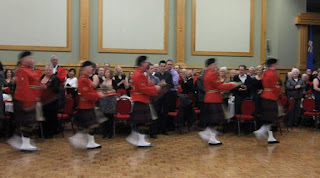Both George W Bush and his father George H W Bush have ‘Walker’ as a middle name.
George was head cheerleader at high school.
George W. Bush's favorite summer job was working as a sporting goods salesman at Sears. He was the leading salesman of ping pong balls.
George W Bush graduated from Yale University with a degree in history, and then earned an MBA from Harvard University. He is the only president to have a Master of Business Administration (MBA) degree.
 |
| Lt. George W. Bush while in the Texas Air National Guard |
Bush found himself overly devoted to alcohol and in 1976 he was arrested for driving under the influence of alcohol, in Kennebunkport, Maine where his father has a summer home. He was fined and suspended from driving for 30 days.
Bush was bought up an Episcopalian and in 1985 a meeting with Billy Graham led to what he described as ‘a gradual warming of the heart’. Bush joined his wife’s United Methodist Church denomination, gave up alcohol and began reading the Scriptures and praying.
Bush up drinking alcohol for good on his 40th birthday after his wife Laura threatened to leave him if he carried on habitually getting drunk.
Bush was the managing general partner of the Texas Rangers baseball team from 1989-1994.
George W. Bush is the only president to have attempted and successfully completed a marathon. He ran the 1993 Houston Marathon in 3 hours, 44 minutes, and 52 seconds.
George Bush Jnr likes eating regular American food. While staying at his Crawford, Texas ranch he likes to drop in on the Coffee Station where he always orders a cheeseburger with onion rings. At the White House he kept to a low-calorie diet. His favourite dishes included pea soup and chicken followed by chilli.
George W Bush's succession to the Presidency was ultimately decided by the Supreme Court, after a month-long battle over who actually won the election. A divided U.S. Supreme Court reversed a state court decision for recounts in Florida's contested election, transforming George W. Bush into the president-elect.
 |
| Official photograph portrait of former U.S. President George W. Bush. |
Bush was the first president to lose the popular vote and to win the electoral vote since Benjamin Harrison in 1888.
George W Bush is the first U.S. President to receive an acting nomination and then subsequently the win, from the Razzie Awards. He was nominated for and won Worst Actor in the film Fahrenheit 9/11 (2004). Though technically he was not acting in the film, merely playing himself via archive footage.
George W Bush is the only US president to have been the father of twins.
Spot the brown-and-white Springer Spaniel born to Millie in the White House during his father President H.W. Bush’s presidential term was the first pet to live in the White House twice. He returned to the presidential mansion after the inauguration of the second President Bush and was joined by Barney, a black Scottish Terrier and a cat, Willy.
George W Bush was the second man to follow his father as US president. First was John Quincy Adams, son of John Adams, second US president.
During a December 14, 2008 press conference in Baghdad, George W. Bush was forced to duck to avoid being hit on the head by shoes that were thrown at him by an Iraqi journalist at a press conference. Muntadhar al-Zaidi shouted, "This is a farewell kiss from the Iraqi people, you dog". Al-Zaidi's shoeing inspired many similar incidents of political protest around the world.
 |
| Al-Zaidi's shoe flying over George Bush's head. |
He considers his hidden talent to be his knowledge of baseball trivia.
Bush's desert island necessities, he said, would be a Bible, running shoes and a fishing rod.
Playboy founder Hugh Hefner is George W. Bush's cousin. Hefner is Bush's 9th cousin twice removed.
President Bush and Saddam Hussein both had their shoes made by the same Italian shoemaker.





















